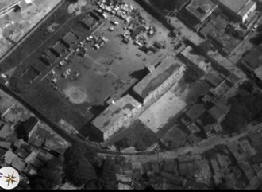
NEWSROOM
 |
NEWSROOM |
|
|
|
|
|||
|
By Mike Mitchell |
||||
 |
They are looking at images of airports to find airfields to land
aircraft, he added. The image quality and clarity is good enough whether
or not an airfield can accept aircraft. "We've got pretty good coverage
of the entire country of
The 480th ISR, based at Langley Air Force Base, |
|||
| An aerial view of earthquake victims gathering in a soccer field in Haiti from an Air Force Global Hawk unmanned aircraft. Aerial images are providing planners valuable situation awareness as they coordinate U.S. military support to the Haiti relief effort. | ||||
|
These images can help determine the level of destruction since aerial
images of
The Global Hawk flew 14 hours Jan. 14, providing between 400 to 700
images, the colonel said. It is flying daily out of
Defense Secretary Robert M. Gates and Navy Adm. Mike Mullen, chairman of
the Joint Chiefs of Staff, briefed reporters on the situation in |
||||
|
This is a whole-of-government effort by the
"Shortly after the devastating earthquake, [the Defense Department]
mobilized to save lives and ease the suffering of the victims," Gates
said. Army and naval forces, disaster-response teams, portable
hospitals, K-9 search-and-rescue teams and relief and medical supplies
are streaming in from many nations, Mullen said.
On Friday morning, the aircraft carrier USS Carl Vinson arrived
outfitted with 19 helicopters, 51 hospital beds, three operating rooms,
hundreds of thousands of gallons of water per day production capability
and a significant capacity to deliver disaster-relief supplies. "A
company from the 82nd Airborne Division is on the ground to provide
security and also distribution to meet those needs."
The USS Normandy and the USS Underwood also will arrive shortly,
followed by the USS Bataan, USS Fort McHenry and USS Carter Hall
carrying the Marines of the 22nd Marine Expeditionary Unit. The hospital
ship USNS Comfort -- with hundreds of medical personnel, medical
capabilities and medical supplies -- will arrive off the coast by the
end of next week, Mullen said. These ships, aircraft and troops "also
deliver hope, although it seems that supplies and security cannot come
quickly enough," the chairman said.
Gates said he's not worried that the aid effort will be seen as a threat
or as a
|
| ?AvStop Online Magazine Contact Us Return To News |
|